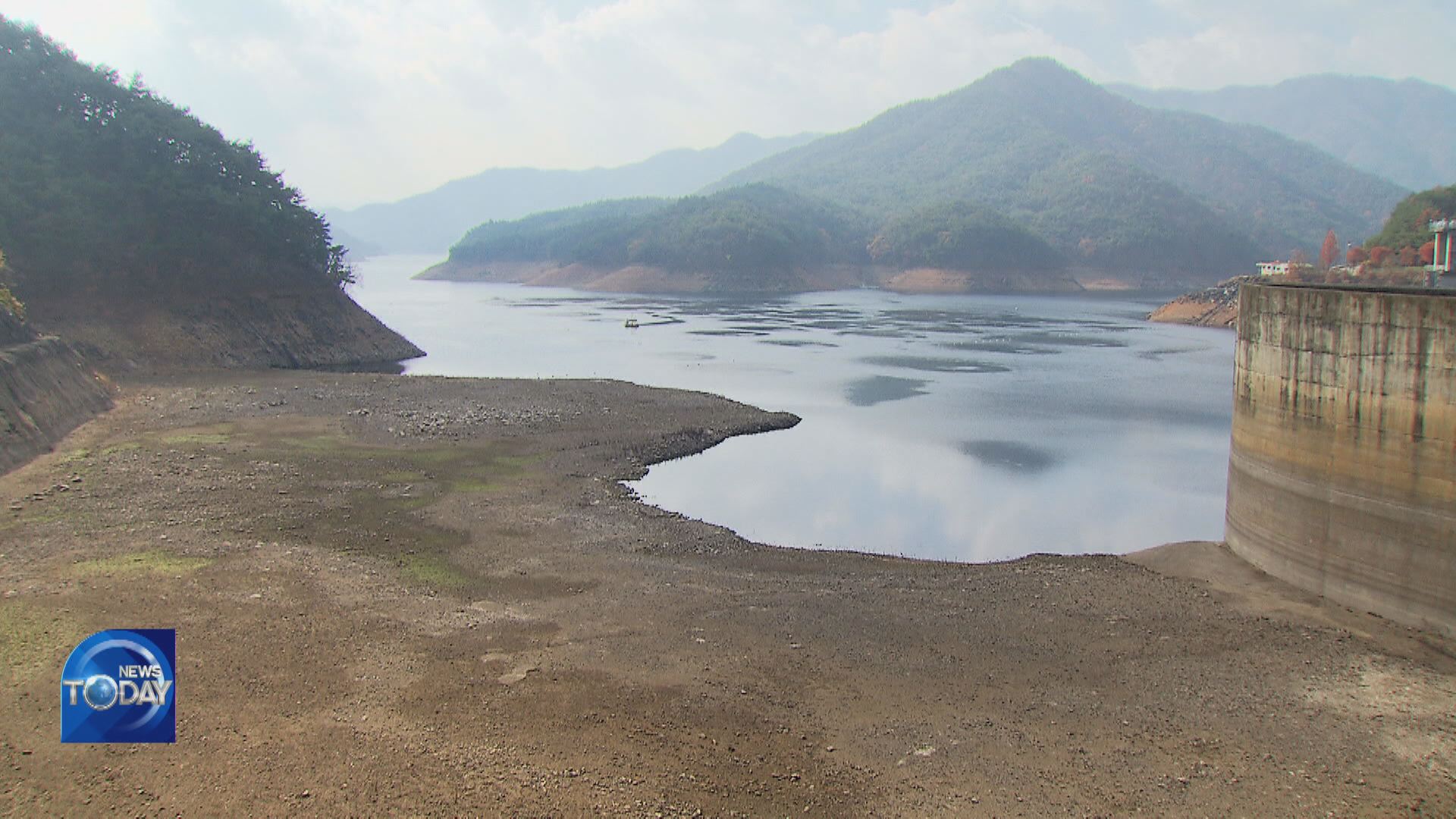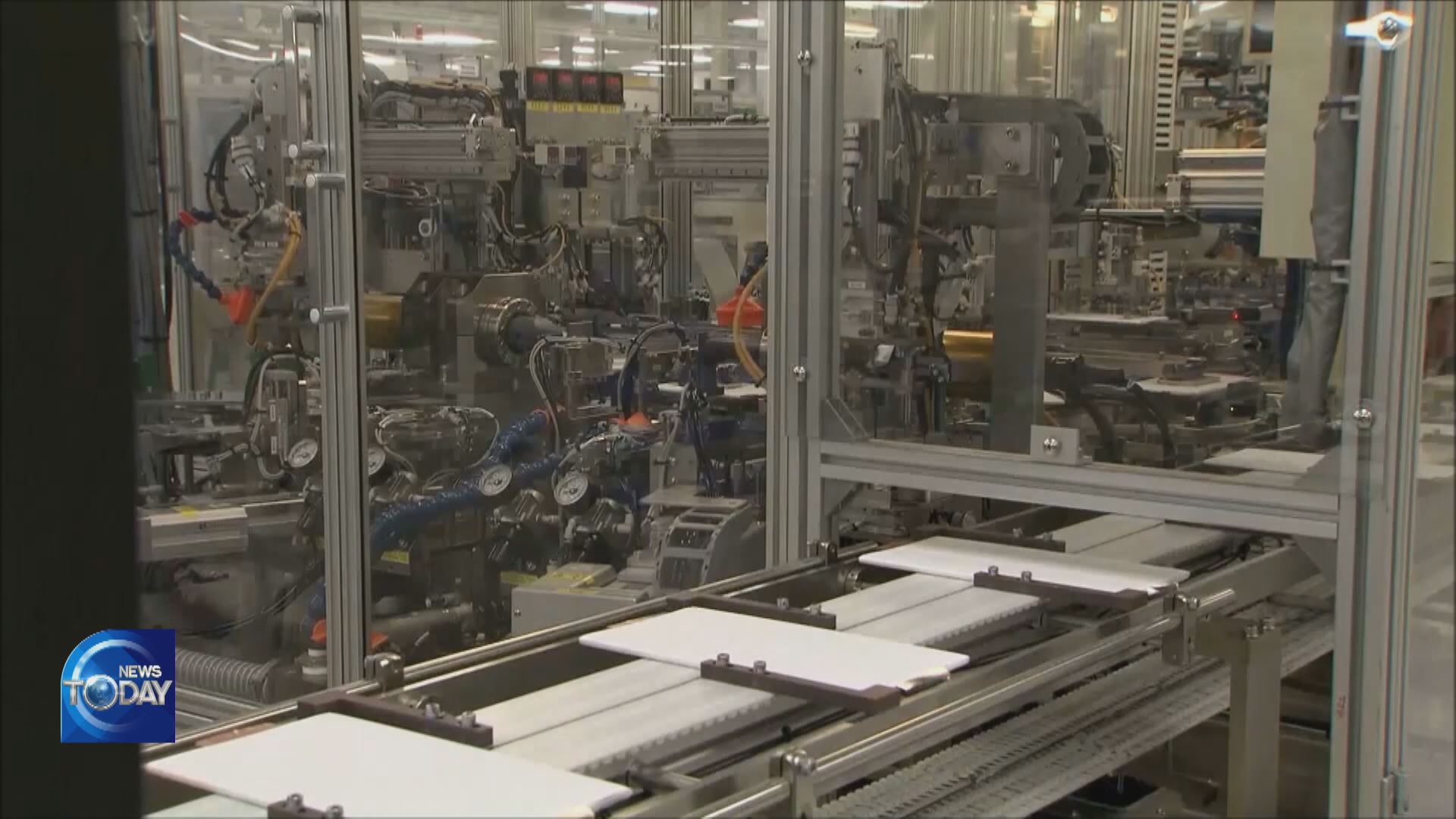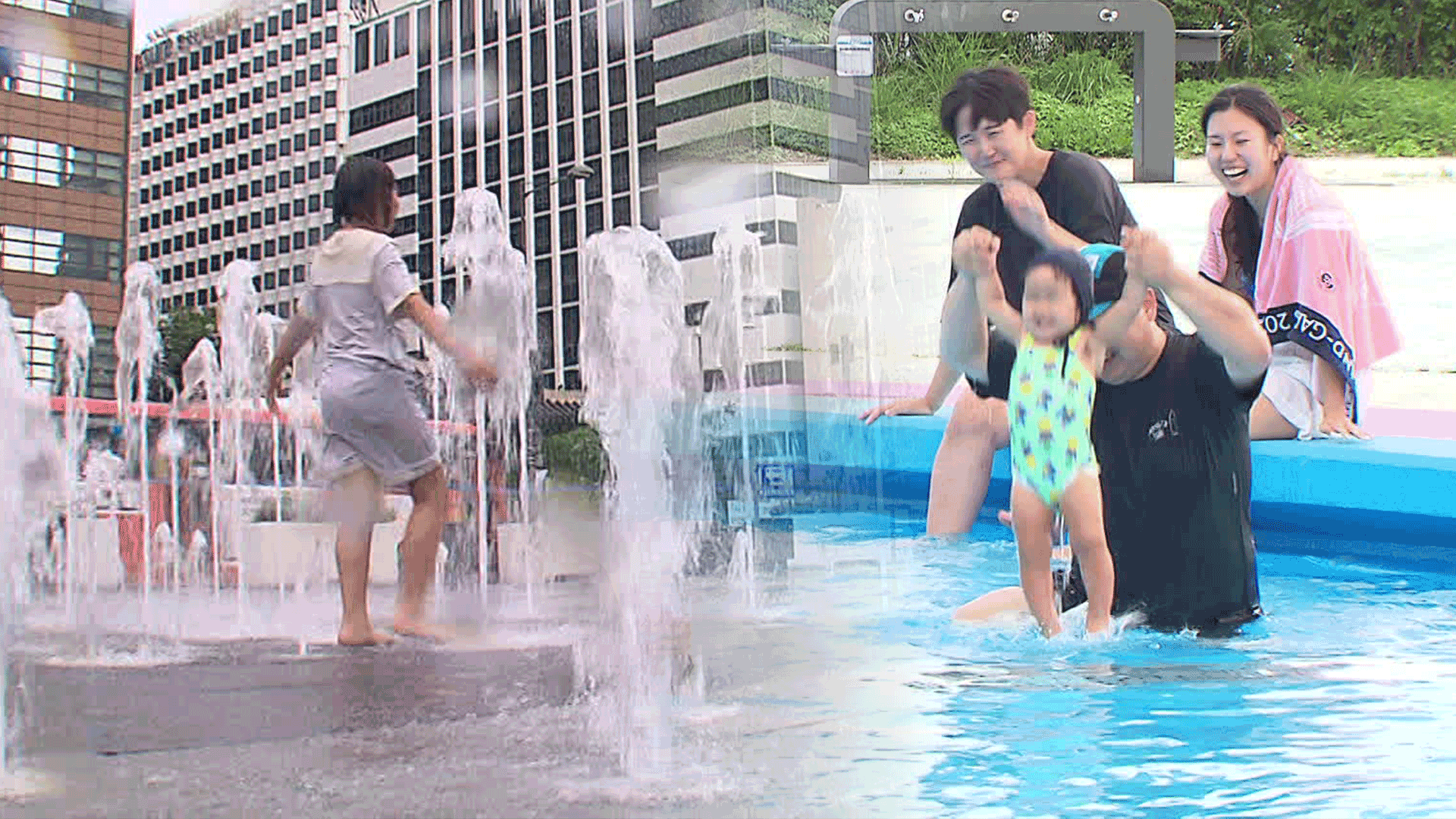WATER RESTRICTIONS DUE TO DROUGHT
입력 2022.11.21 (15:28)
수정 2022.11.21 (16:45)
읽어주기 기능은 크롬기반의
브라우저에서만 사용하실 수 있습니다.
[Anchor Lead]
Gwangju and surrounding areas in Jeollanam-do Province are experiencing unprecedented autumn drought and an imminent depletion of its water source. Water is already being rationed out in some islands and a prolonged drought would inevitably lead to water restrictions for the city of Gwangju next spring.
[Pkg]
A water sprinkler truck pours water into a dried reservoir. Water supply to Geumildo Island in Wandogun County has been restricted to follow the cycle of two days on and four days off. Water restrictions will be applied to more islands.
[Soundbite] Kim Hyeon-hee(Restaurant Owner) : "I don’t know how I will deal with four days without water. I'll try to use as little as possible. My customers are all worried."
The water level at Juamho Lake has fallen dramatically. The lake is the water source for 1.5 million Gwangju residents. The water reserve rate fell to 31%, about half of previous years. It has remained in the serious drought response level since late August. The situation is similar for Dongbokho Lake, responsible for 60% of potable water supply to Gwangju. If the drought continues, the water reserve would be depleted by March, making it impossible to get water from the lake. Gwangju metropolitan city is reviewing a plan to build large underwater pipes in the upstream area of Dongbokho Lake and the water filtration plant and draw water from the Yeongsangang River to the plant.
[Soundbite] Lim Dong-ju(Gwangju Metropolitan Waterworks Authority) : "Time is short to assess the feasibility and design a plan and start the construction. But we’ll find the fastest way to deal with the severe drought."
The city government also launched a massive public campaign to use 20% less water. Gwangju regards the potential depletion of water source as a disaster risk and is setting up a preemptive emergency action task force to devise countermeasures.
Gwangju and surrounding areas in Jeollanam-do Province are experiencing unprecedented autumn drought and an imminent depletion of its water source. Water is already being rationed out in some islands and a prolonged drought would inevitably lead to water restrictions for the city of Gwangju next spring.
[Pkg]
A water sprinkler truck pours water into a dried reservoir. Water supply to Geumildo Island in Wandogun County has been restricted to follow the cycle of two days on and four days off. Water restrictions will be applied to more islands.
[Soundbite] Kim Hyeon-hee(Restaurant Owner) : "I don’t know how I will deal with four days without water. I'll try to use as little as possible. My customers are all worried."
The water level at Juamho Lake has fallen dramatically. The lake is the water source for 1.5 million Gwangju residents. The water reserve rate fell to 31%, about half of previous years. It has remained in the serious drought response level since late August. The situation is similar for Dongbokho Lake, responsible for 60% of potable water supply to Gwangju. If the drought continues, the water reserve would be depleted by March, making it impossible to get water from the lake. Gwangju metropolitan city is reviewing a plan to build large underwater pipes in the upstream area of Dongbokho Lake and the water filtration plant and draw water from the Yeongsangang River to the plant.
[Soundbite] Lim Dong-ju(Gwangju Metropolitan Waterworks Authority) : "Time is short to assess the feasibility and design a plan and start the construction. But we’ll find the fastest way to deal with the severe drought."
The city government also launched a massive public campaign to use 20% less water. Gwangju regards the potential depletion of water source as a disaster risk and is setting up a preemptive emergency action task force to devise countermeasures.
■ 제보하기
▷ 카카오톡 : 'KBS제보' 검색, 채널 추가
▷ 전화 : 02-781-1234, 4444
▷ 이메일 : kbs1234@kbs.co.kr
▷ 유튜브, 네이버, 카카오에서도 KBS뉴스를 구독해주세요!
- WATER RESTRICTIONS DUE TO DROUGHT
-
- 입력 2022-11-21 15:28:24
- 수정2022-11-21 16:45:13

[Anchor Lead]
Gwangju and surrounding areas in Jeollanam-do Province are experiencing unprecedented autumn drought and an imminent depletion of its water source. Water is already being rationed out in some islands and a prolonged drought would inevitably lead to water restrictions for the city of Gwangju next spring.
[Pkg]
A water sprinkler truck pours water into a dried reservoir. Water supply to Geumildo Island in Wandogun County has been restricted to follow the cycle of two days on and four days off. Water restrictions will be applied to more islands.
[Soundbite] Kim Hyeon-hee(Restaurant Owner) : "I don’t know how I will deal with four days without water. I'll try to use as little as possible. My customers are all worried."
The water level at Juamho Lake has fallen dramatically. The lake is the water source for 1.5 million Gwangju residents. The water reserve rate fell to 31%, about half of previous years. It has remained in the serious drought response level since late August. The situation is similar for Dongbokho Lake, responsible for 60% of potable water supply to Gwangju. If the drought continues, the water reserve would be depleted by March, making it impossible to get water from the lake. Gwangju metropolitan city is reviewing a plan to build large underwater pipes in the upstream area of Dongbokho Lake and the water filtration plant and draw water from the Yeongsangang River to the plant.
[Soundbite] Lim Dong-ju(Gwangju Metropolitan Waterworks Authority) : "Time is short to assess the feasibility and design a plan and start the construction. But we’ll find the fastest way to deal with the severe drought."
The city government also launched a massive public campaign to use 20% less water. Gwangju regards the potential depletion of water source as a disaster risk and is setting up a preemptive emergency action task force to devise countermeasures.
Gwangju and surrounding areas in Jeollanam-do Province are experiencing unprecedented autumn drought and an imminent depletion of its water source. Water is already being rationed out in some islands and a prolonged drought would inevitably lead to water restrictions for the city of Gwangju next spring.
[Pkg]
A water sprinkler truck pours water into a dried reservoir. Water supply to Geumildo Island in Wandogun County has been restricted to follow the cycle of two days on and four days off. Water restrictions will be applied to more islands.
[Soundbite] Kim Hyeon-hee(Restaurant Owner) : "I don’t know how I will deal with four days without water. I'll try to use as little as possible. My customers are all worried."
The water level at Juamho Lake has fallen dramatically. The lake is the water source for 1.5 million Gwangju residents. The water reserve rate fell to 31%, about half of previous years. It has remained in the serious drought response level since late August. The situation is similar for Dongbokho Lake, responsible for 60% of potable water supply to Gwangju. If the drought continues, the water reserve would be depleted by March, making it impossible to get water from the lake. Gwangju metropolitan city is reviewing a plan to build large underwater pipes in the upstream area of Dongbokho Lake and the water filtration plant and draw water from the Yeongsangang River to the plant.
[Soundbite] Lim Dong-ju(Gwangju Metropolitan Waterworks Authority) : "Time is short to assess the feasibility and design a plan and start the construction. But we’ll find the fastest way to deal with the severe drought."
The city government also launched a massive public campaign to use 20% less water. Gwangju regards the potential depletion of water source as a disaster risk and is setting up a preemptive emergency action task force to devise countermeasures.
이 기사가 좋으셨다면
-
좋아요
0
-
응원해요
0
-
후속 원해요
0















![[단독] 윤석열 정부, ‘대통령실 공사비 미지급’ 피소](/data/news/2025/06/30/20250630_8MRvHk.png)

이 기사에 대한 의견을 남겨주세요.